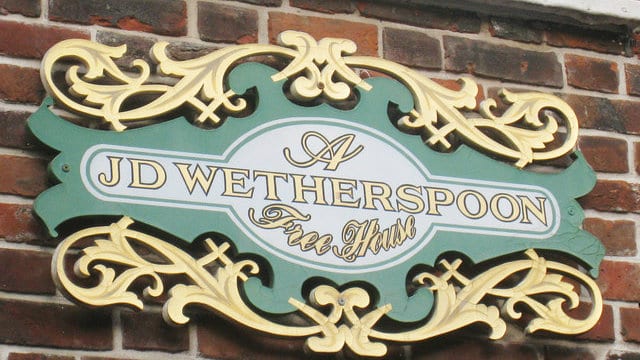Pub chain J D Wetherspoon (LSE: JDW) said this morning that like-for-like sales rose by 3.4% during the six months to 15 January. However, the group’s total sales only rose by 1.6%, reflecting the net closure of 19 pubs so far this year.
I’ve previously questioned the outlook for Wetherspoon, criticising the group’s high debt levels and falling profit margins. Today’s update suggests I may have been wrong. While debt remains a concern for me, margins have actually improved this year. Wetherspoon expects to report an adjusted operating margin of 8% for the first half of the year, up from 6.3% for the same period last year.
Is Wetherspoon a buy?
Not so fast. The group still faces some challenges. In today’s statement, outspoken founder Tim Martin warned that costs are expected to be “significantly higher” during the second half of the year. Wages are expected to rise by 4% on an annualised basis, while the group also expects to pay an extra £7m in business rates, plus £2m for the Apprenticeship Levy.
Should you invest £1,000 in Gsk right now?
When investing expert Mark Rogers has a stock tip, it can pay to listen. After all, the flagship Motley Fool Share Advisor newsletter he has run for nearly a decade has provided thousands of paying members with top stock recommendations from the UK and US markets. And right now, Mark thinks there are 6 standout stocks that investors should consider buying. Want to see if Gsk made the list?
Alongside this, Mr Martin warned that the company expects “like-for-like sales will be lower in the next six months”. However, the group’s strong performance during the first half means that “a slightly improved trading outcome” is expected for the full year.
The shares rose by about 2% during the first hour of trading this morning. I estimate that earnings per share are expected to rise by 9%-10% this year, putting the stock on a forecast P/E of about 17.
That’s a solid performance, but debt and inflationary pressures remain valid concerns in my opinion, and the dividend yield of 1.3% isn’t especially tempting.
Overall, I’d rate Wetherspoon a hold.
Continuous improvement
I’ve seen Wetherspoon referred to as the nation’s canteen. If that’s the case, then high street baker Greggs (LSE: GRG) is fast becoming the nation’s snack bar. The group’s like-for-like sales rose by 4.2% last year, thanks mainly to the rapid sales growth of Greggs’ food-to-go offerings.
Its success has exceeded expectations in recent years. The firm’s sales growth is well known. But you may not be so familiar with the underlying financial quality of this business. This company consistently generates attractive levels of free cash flow and has maintained a net cash position for at least six years, despite investing in expansion.
Since 2011, I estimate that Greggs has returned about £161m of surplus cash to shareholders in the form of dividends. That’s about 16% of the group’s current market value.
Over the same period, the firm’s shares have risen by 115%. That’s double the 58% return provided by the FTSE 250 over the same period.
Should you buy Greggs?
City consensus forecasts suggest that Greggs’ earnings per share will rise by 6.3% to 62.3p this year. This puts the stock on a forecast P/E of 16, with a prospective yield of 3.2%. This seems a fair price for a proven performer. I’d be happy to buy and hold at these levels.








